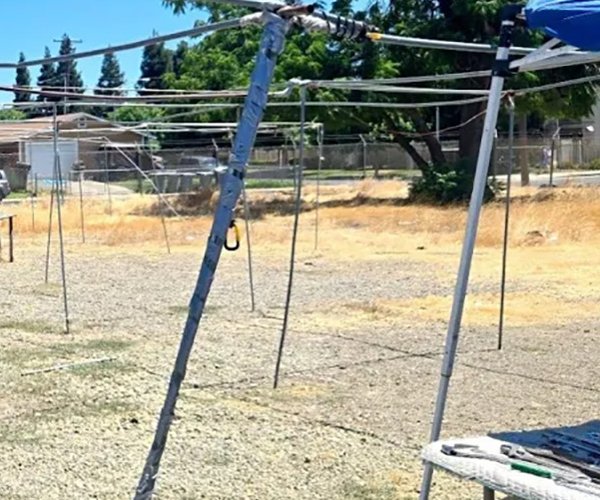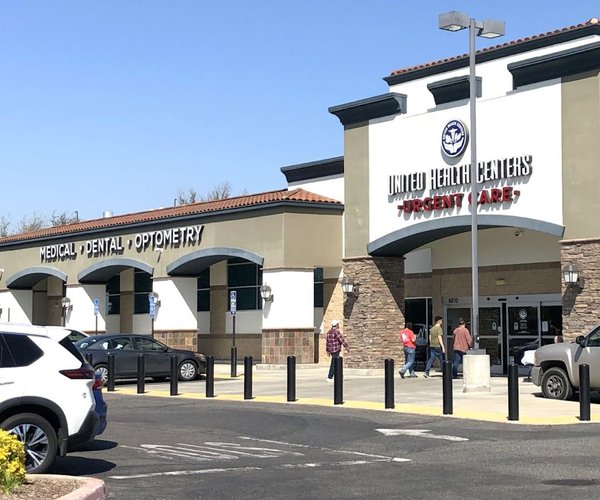Tensions were high at the Stanislaus County Water Advisory Committee meeting Wednesday morning as local water representatives clashed with State Water Resources Control Board officials during a discussion on the latter’s proposal to cut water use for the benefit of fish and wildlife.
“Wednesday’s meeting was disappointing. The State Water Board continues its narrative that the only thing fish need is more water, and that water must come from our region, because their science says so,” said Turlock Irrigation District spokesman Herb Smart. “The best available, most recent, most focused, most inclusive Tuolumne River science shows a quite different perspective about what is best for the River and the fish in it.
“It is imperative that our region remains united and says with a loud voice that we will not stand for this as proposed,” Smart continued. “This proposal will result in significant on-the-ground effects upon the people of our region. What’s worse, the state is asking us to bear this burden with no guarantee the water it seeks will accomplish its intended environmental goals.”
On Sept. 15, the State Water Board released their Substitute Environmental Document for public review and comment. This controversial document, which was close to 2,000 pages and took State Water Board staff years to complete, was given to the public for a 60-day comment period.
“There have been requests to extend the comment period, which ends November 15,” said Chief Deputy Director Eric Oppenheimer. “We’re looking carefully at that right now. I think it’s likely that we will provide some sort of extension.”
As detailed in the draft, the State Water Board proposes increasing flows to provide habitats for fish and wildlife upstream of the Delta from Feb. 1 to June 30 from three tributaries of the lower San Joaquin River and adjusting the salinity requirements to a slightly high level to reflect updated scientific knowledge and protect farming in the Southern Delta.
Oppenheimer, along with Deputy Director Les Grober, were in Modesto Wednesday to provide further information on the proposal as well as address the concerns of local water representatives.
“We’ve heard from the point the SED was released and over the last several months concerns from people here in the Valley having sufficient opportunity to have questions answered and to express concerns over the impacts that the proposal could have on your communities,” said Oppenheimer. “That’s part of the reason we’re here today.”
To back up the State Water Board’s proposal, Oppenheimer told those in attendance Wednesday that the current Bay-Delta Water Quality Control Plan, which was last updated in 1995, was out of date and the need for an update was identified as species have been declining over the past decade.
“The fisheries are not in good shape. They have not recovered since the 1995 plan was adopted,” said Oppenheimer. “If we don’t and things get worse, it could put us in a position where down the road we need to take even more draconian actions—and that’s not going to be good for anyone.”
According to Grober, the decision to focus on flow in the proposal was because there are many benefits to flow, including improved growth and survival of native fish by improving water temperatures and increasing floodplain habitat.
“A number of scientific studies have showed that flow is a major factor in the survival of fish,” said Grober.
Oppenheimer said that this decision will be a difficult one for the State Water Board as a 2010 flow criteria report concluded that 60 percent of flow should be left in the Lower San Joaquin River Basin for the benefit of fish, yet current uses including agriculture and drinking water rely on up to 80 percent or more of the unimpaired flow.
“This is going to be a really challenging decision for our Board,” said Oppenheimer. “Because from the situation we’re in not enough water remains in the San Joaquin River and the three tributaries to support fisheries—but at the same time the farm businesses, communities and schools in the region are dependent on that same water.
“There are people that tell us our proposal doesn’t put enough water in the stream to protect the fisheries, there are people who tell us that we are proposing to leave too much,” continued Oppenheimer.
Both Grober and Oppenheimer encouraged settlements, stating that “the knowledge, innovation and determination of local water agencies and local people working with agency experts and other organizations can provide the foundation for durable solutions.”
“We think that more lasting and beneficial improvement to the fisheries can occur through voluntary agreements that provide a combination of flow and non-flow actions, while at the same time reducing the water costs to the communities,” said Oppenheimer.
“We want to be as smart about it as we can to get the best use of a limited quality of water,” added Grober.
Despite the State Water Board’s efforts to explain and gather support for their proposal Wednesday, local water representatives were nowhere near satisfied.
“We definitely want to deliver a message so I’m just going to call BS on you right off the bat here,” said Stanislaus County Supervisor Terry Withrow. “This is an insult to our intelligence.”
“You have to understand the frustrations we have with what’s going on here and how it’s going to affect our region. We don’t want this to count as a box you guys check to say you came down here and talked to us because that’s just not going to work for us,” continued Withrow.
The State Water Board will hold public hearings on the proposal on Nov. 2 and Nov. 10 in the Byron Sher Auditorium of the Joe Serna Jr. — CalEPA Headquarters Building, 1001 I Street in Sacramento, and on Nov. 4 in the Tuolumne River Room of Modesto Centre Plaza, 1000 L. Street.
“Right now we’re in the process of setting up additional meetings as well as larger staff workshops where we’ll invite our Board members,” said Oppenheimer. “We recognize we need to communicate with you and we want your input and we want to hear your concerns and incorporate that as we move forward.”
The Board will consider approving the proposed Bay-Delta Plan amendments at a public meeting that will be held in early 2017.









